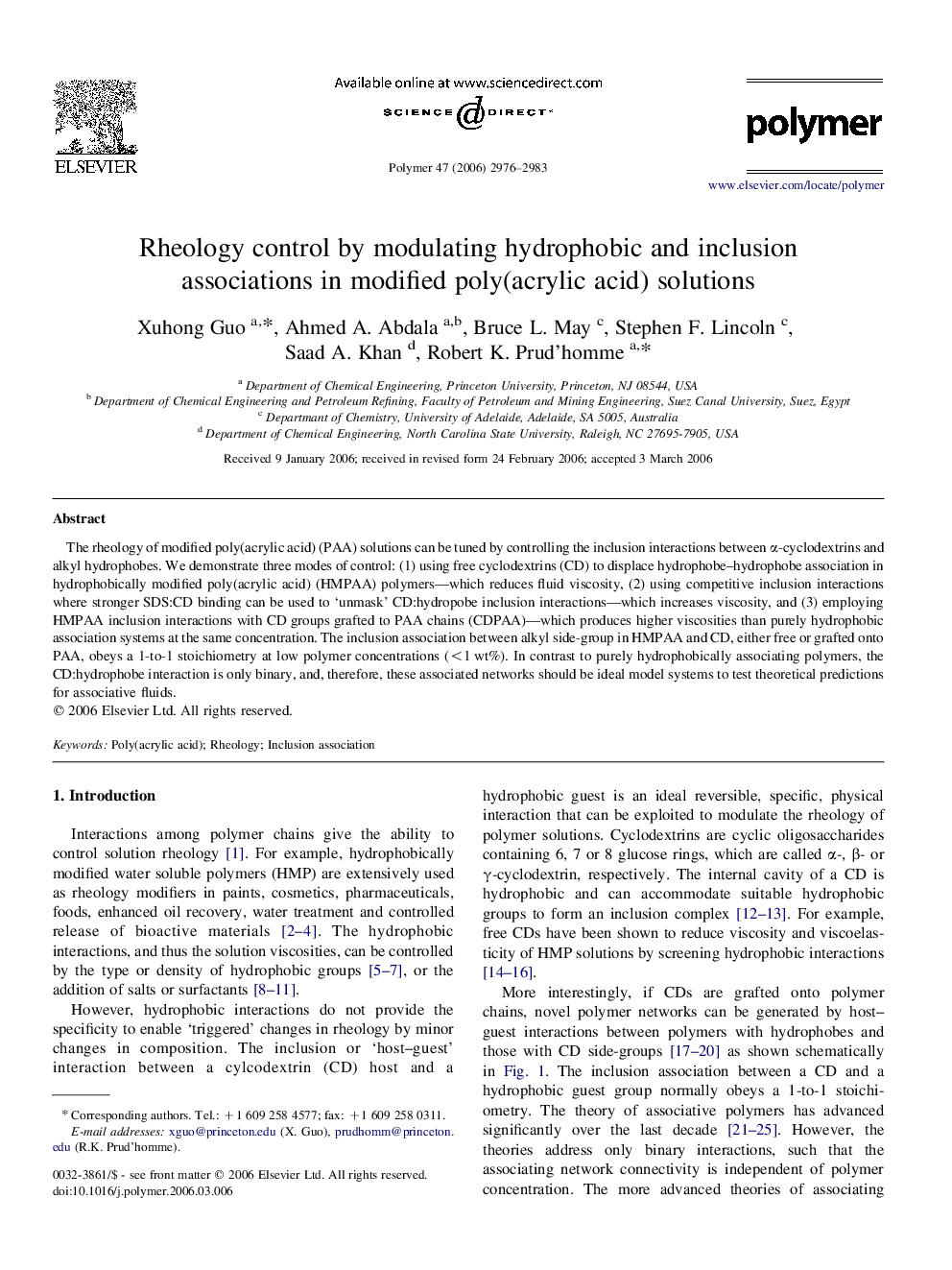| Article ID | Journal | Published Year | Pages | File Type |
|---|---|---|---|---|
| 5186344 | Polymer | 2006 | 8 Pages |
The rheology of modified poly(acrylic acid) (PAA) solutions can be tuned by controlling the inclusion interactions between α-cyclodextrins and alkyl hydrophobes. We demonstrate three modes of control: (1) using free cyclodextrins (CD) to displace hydrophobe-hydrophobe association in hydrophobically modified poly(acrylic acid) (HMPAA) polymers-which reduces fluid viscosity, (2) using competitive inclusion interactions where stronger SDS:CD binding can be used to 'unmask' CD:hydropobe inclusion interactions-which increases viscosity, and (3) employing HMPAA inclusion interactions with CD groups grafted to PAA chains (CDPAA)-which produces higher viscosities than purely hydrophobic association systems at the same concentration. The inclusion association between alkyl side-group in HMPAA and CD, either free or grafted onto PAA, obeys a 1-to-1 stoichiometry at low polymer concentrations (<1 wt%). In contrast to purely hydrophobically associating polymers, the CD:hydrophobe interaction is only binary, and, therefore, these associated networks should be ideal model systems to test theoretical predictions for associative fluids.
